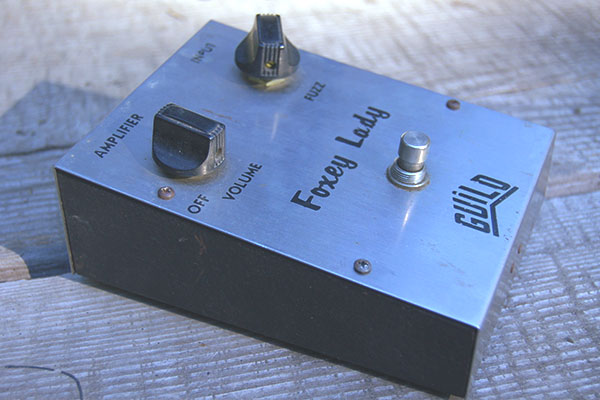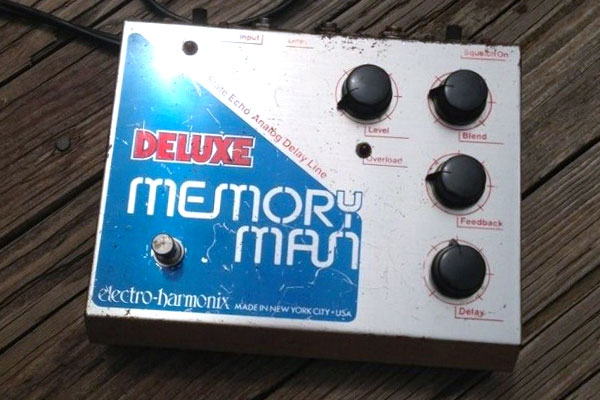Nestled in the shadows of New York City’s skyline, Electro-Harmonix has been shaping the sounds of popular music since the company was founded in 1968 by Mike Matthews.
Matthews, armed with a unique mix of business instinct and technical knowhow, had his professional start in sales at IBM. There, he picked up the fundamentals of business that served him well by the time EHX began taking off in the ‘70s.
Matthews’ first creation, the LPB-1 boost helped to revolutionize music, Matthews has said over the years, by pushing amps to their sonic limits, and the success of his simple-to-use booster helped Matthews’ new company blossom.
Building on the success of the LPB-1, EHX created the Big Muff Pi, a fuzz box that replicated much of the overdriven tone heard on Jimi Hendrix and Rolling Stones records. By capturing the essence of some of the most popular artists at the time, EHX’s first pedal cemented a lasting legacy. To many guitarists, the Big Muff Pi, with its large pressed steel chassis and unique name, is the definitive fuzz box to own. An often-replicated design, but never truly duplicated in terms of sonic character, the Big Muff Pi helped launch EHX as a leading contender in the growing world of guitar effect manufacturing.

Using his experience building fuzz boxes on contract for Guild, Matthews created the pedal that guitarists craved, so much so that Jimi Hendrix himself reportedly bought one from Manny’s Music during a stop in New York in 1968. Matthews also has a signed personal check from Carlos Santana, which served as payment for his very own Big Muff Pi in 1971, he recalled in an interview with Premier Guitar.
The Big Muff Pi still sells around 3,000 units a month, according to Matthews, and the LPB-1 boost is a strong seller as well, with EHX still moving around 600 units a month almost 50 years since the product was launched. Together, both products helped launch EHX into a global company that still has their principal assembly and product finishing operations located in Queens; other classic EHX products soon followed.
The Small Stone Phaser, created in 1974 by EHX’s David Cockerell, has a unique sound that differs from other phasers thanks to EHX’s use of Operational Transconductance Amplifiers, which adds a flavorful distinction from the Small Stone’s main rival, the much-beloved MXR Phase 90.
EHX’s Electric Mistress, a stereo flanger, made its debut in 1976 and quickly was embraced by players like Alex Lifeson, Andy Summers and David Gilmour. The pedal, like the Small Stone, was developed by Cockerell and was the first flanger that was able to be used on stage, a large technical achievement at the time.

The Deluxe Memory Man, released in 1976, essentially puts the hypnotic sounds of early U2 into a single steel box. Its roots began as a simple solid state echo/analog delay, which, like the Electric Mistress, brought a previously studio-exclusive effect to the onstage effects rig. This time EHX mastered the electronic delay and, over the years, the pedal grew into the Deluxe Memory Man, one of the most sought after and popular pedals of all time. The Memory Man sound is uniquely EHX, and the sonic possibilities of the six knobs are nearly endless. The Big Muff Pi may be EHX’s most famous pedal, but the Memory Man may be the company’s greatest achievement.
In 1982, the company’s finances were shaky and declaration of bankruptcy followed shortly after a labor union dispute. By 1984 the company ran into further financial trouble and Matthews decided to shift his focus to other ventures, launching New Sensor Corp., a new USSR-based company that produced and distributed vacuum tubes, in 1988. From his factories in St. Petersburg, Saratov and Novosibirsk, Matthews grew the company into one of the largest vacuum-tube suppliers in the world. Still, Matthews’ first love was guitar effects and, after noticing the still-strong demand for EHX products, his company Sovtek began reproducing EHX effect pedals in 1990.
Today, Russian Sovtek EHX pedals are sought after for their unique components and Soviet aesthetic. They eventually became a mainstay in the music industry while serving as an emblem of Matthews’ entrepreneurial spirit and ability to adapt to changing markets. While Matthews’ unique business sense helped keep the lights on, the quality of the products the company produced helped generations of players fall in love with the brand.
The charm of Matthews’ products isn’t only found in their technical accomplishments, but their longevity. In the age of accelerated obsolescence, with consumers getting new smartphones every year or so while hungry to purchase the next advancement, there is something refreshing about using a dependable old-school analog pedal.
Despite ample competition from boutique brands and the corporate juggernauts alike, players still crave the originals that only EHX can provide. It seems like they always will find a way to give players what they want, all from a nondescript building in Long Island City.
Electro-Harmonix







